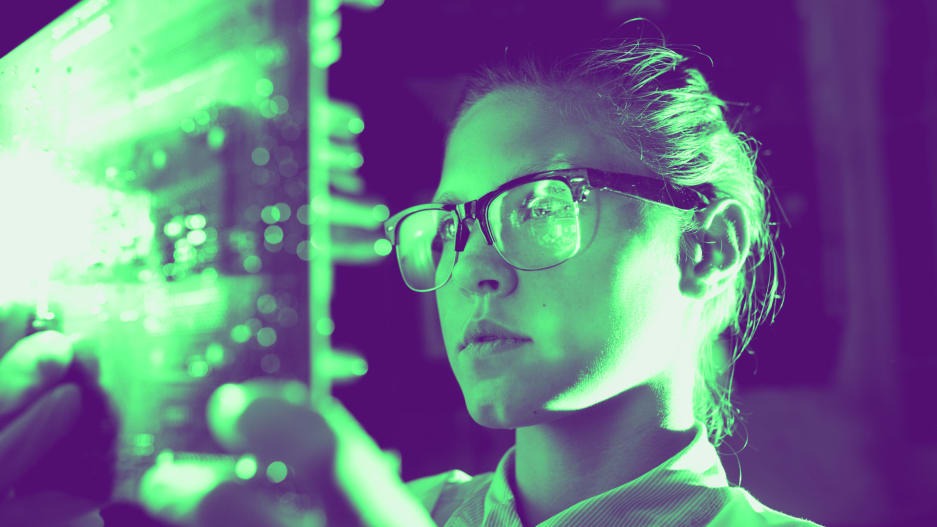- | 9:00 am
POV: To address the gender gap in the tech sector, look to new tech innovations
With more women in AI R&D, we will address care, stereotypes, and algorithms in new and meaningful ways.

The world is changing. Fast.
From ChatGPT and artificial intelligence to blockchain, streaming, cloud computing, the Internet of Things, and Big Data, rapid technological advancements are forever altering our status quo—and no major industry is exempt.
The digital disruption is real, which begs the question: Why aren’t we doing more to disrupt the gender gap? According to the World Economic Forum, it will take us 132 years to reach gender equality. But we don’t have to wait that long. It’s really not that difficult.
Why should it take decades to end gender disparate pay?
Why is it taking so much time to put more women in leadership roles?
Why is caregiving still a systemic problem for working women—with no real solutions in sight?
And, are we spending enough time now to ensure today’s AI systems do not perpetuate biases and stereotypes of the past?
These are all questions that will be discussed at the Cannes Lions International Festival of Creativity, where creatives and disruptors the world over celebrate creativity in breakthrough campaigns that are inspiring solutions to real-world issues.
So, while we are rightly wondering to what extent new technologies like ChatGPT will eliminate jobs, stifle creativity, and perpetuate biases of the past, we must also ponder how AI and inclusive design thinking can help us accelerate progress on global issues like gender equality. We can now shine a light on the hidden factors to make the invisible visible.
Technology is the mother of invention and bias is as old as father time. So too are traditional hiring practices and much of the workplace that was designed by men for men.
When it comes to the current state of women in the workplace, progress has been slow. In this year’s Women at Work report, Deloitte researchers found that of the 5,000 women surveyed across 10 countries, only 5% said they worked for Gender Equality Leaders or organizations that fostered inclusive cultures that support working women and promote mental well-being. In addition, The Female Quotient’s recent FQ/IPSOS survey reported that more than half (53%) of men agree that their workplaces should be doing more to advance gender equality.
If you are unfamiliar, Gender Equality Leaders are organizations that foster inclusive cultures that support working women and promote mental well-being. And the latest report found that only 5% of women surveyed work for these leaders. Out of 5,000 working women across 10 countries, only 250 said they work for Gender Equality Leaders. Employers take note: Women who work for these leaders report more positive mental health, are more likely to recommend their employer to others, and are less likely to experience non-inclusive behaviors. Happy and healthy employees plus Gender Equality Leaders equal a good workplace.
The fact is, when creativity, technology, and AI come together, even the seemingly impossible is possible. It’s time we put these forces to work and harness this transformative power to advance equality. The outlook is promising.
While women still lag in the tech sector across the board, LinkedIn economic data shows trends in AI talent with women talent growing faster than male talent. With more women in AI R&D, we will address care, stereotypes, and algorithms in new and meaningful ways.
The truth is, there are many inclusive alternative software options today that identify whether companies are adopting a masculine tone in job postings and corporate communications, which can alienate women. This is a perfect place to start to get more women into STEM careers.
Imagine how quickly we could close the gender gap if we combined creativity and technology. From promoting unbiased recruitment to facilitating pay-equity analyses, education/training, and bias detection/mitigation, the possibilities are truly endless.
The time for change is now. Achieving gender parity doesn’t have to take 132 years because we have the power of collaboration, design thinking, and technology on our side. Together, we can close the gender gap. Fast.






































